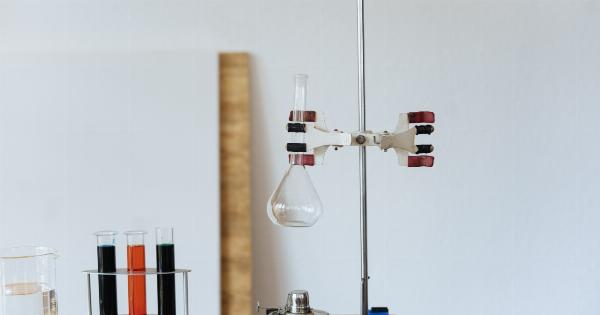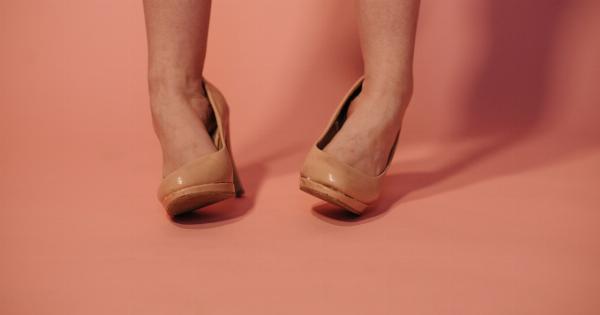Ankle edema, also known as swollen ankles, is a condition characterized by the accumulation of excess fluid in the ankles. It can be uncomfortable and may hinder daily activities.
Understanding the causes of ankle edema and discovering ways to alleviate the swelling can help individuals find relief and improve their quality of life. In this article, we will explore the various causes of ankle edema and discuss effective treatment options.
Causes of Ankle Edema
There are several factors that can contribute to ankle edema. Below are some common causes:.
1. Prolonged Standing or Sitting
Remaining in one position for extended periods, such as standing or sitting for long durations, can lead to fluid accumulation in the ankles. This is because stagnant blood and fluid tend to pool in the lower extremities, causing swelling.
2. Injury or Trauma
Ankle edema can also be a result of injuries or trauma to the ankle. Sprains, strains, fractures, and even post-surgery swelling can lead to fluid buildup in the affected area.
3. Pregnancy
Pregnant women commonly experience ankle edema due to hormonal and physiological changes in their bodies. The growing uterus can put pressure on the veins in the pelvic area, leading to fluid retention in the ankles.
4. Obesity
Excess body weight can put strain on the lower extremities, causing fluid to accumulate in the ankles. The added pressure on the veins can also contribute to the development of ankle edema.
5. Preeclampsia
Preeclampsia is a pregnancy-related condition characterized by high blood pressure and damage to various organs, including the kidneys. Ankle edema is one of the hallmark symptoms of preeclampsia.
6. Venous Insufficiency
When the blood flow in the veins is compromised, it can result in venous insufficiency. This condition can cause fluid retention in the ankles and lead to the development of ankle edema.
7. Certain Medications
Some medications, such as calcium channel blockers, nonsteroidal anti-inflammatory drugs (NSAIDs), and corticosteroids, can cause fluid retention and ankle edema as a side effect.
8. Lymphedema
Lymphedema is a chronic condition that occurs when the lymphatic system is damaged or compromised. This can cause swelling in various parts of the body, including the ankles.
9. Heart and Kidney Conditions
Heart failure and kidney disease can both contribute to the development of ankle edema. These conditions affect fluid balance in the body, causing fluid to accumulate in the ankles.
10. Infections
Infections in the lower extremities, such as cellulitis, can cause localized swelling, including in the ankles.
Ways to Alleviate Ankle Edema
Once the underlying cause of ankle edema has been identified, several methods can help alleviate the swelling and discomfort. Here are some effective ways to alleviate ankle edema:.
1. Elevation
Raising the affected leg above the heart level can help reduce swelling. This encourages the excess fluid to drain away from the ankles and can provide relief.
2. Compression
Using compression socks or stockings can help prevent fluid accumulation in the ankles. These garments apply gentle pressure to the legs, promoting better blood and fluid circulation.
3. Low-Sodium Diet
Reducing sodium intake can help minimize water retention and swelling. A low-sodium diet can be beneficial in managing ankle edema, especially for individuals with heart or kidney conditions.
4. Regular Exercise
Engaging in regular physical activity can help improve circulation and reduce fluid buildup in the ankles. Simple exercises such as walking or cycling can be effective in alleviating ankle edema.
5. Cold Therapy
Applying cold packs or ice to the swollen ankles can help reduce inflammation and alleviate discomfort. Cold therapy can also help constrict blood vessels, reducing the flow of fluid to the area.
6. Medications
In some cases, doctors may prescribe diuretics to help reduce fluid retention and alleviate ankle edema. However, it is important to consult a healthcare professional before starting any medication.
7. Avoiding Prolonged Sitting or Standing
If your ankles tend to swell when you stand or sit for long periods, try incorporating breaks or gentle movements to promote blood circulation. This can prevent the accumulation of fluid in the ankles.
8. Massage
Gentle massage of the affected area can help stimulate lymphatic drainage and improve fluid circulation. Consult with a professional massage therapist to ensure appropriate techniques are used.
9. Wearing Proper Footwear
Wearing well-fitting shoes with proper support can help reduce strain on the ankles and promote better blood flow. Avoid tight or restrictive footwear that can impede circulation and contribute to ankle edema.
10. Seeking Medical Advice
If ankle edema persists or is accompanied by other concerning symptoms, it is essential to consult a healthcare professional. They can evaluate the underlying cause and recommend appropriate treatment options or referrals to specialists if necessary.
It is important to note that the treatment approach for ankle edema may vary depending on the underlying cause. Therefore, it is crucial to identify the specific cause of ankle edema through proper medical evaluation.
Conclusion
Ankle edema can cause discomfort and hinder daily activities. By understanding the various causes and adopting appropriate measures, individuals can alleviate the swelling and find relief.
From lifestyle modifications to medical interventions, there are several ways to manage ankle edema effectively. If you are experiencing persistent ankle edema, it is always best to consult a healthcare professional for a proper diagnosis and personalized treatment plan.




























